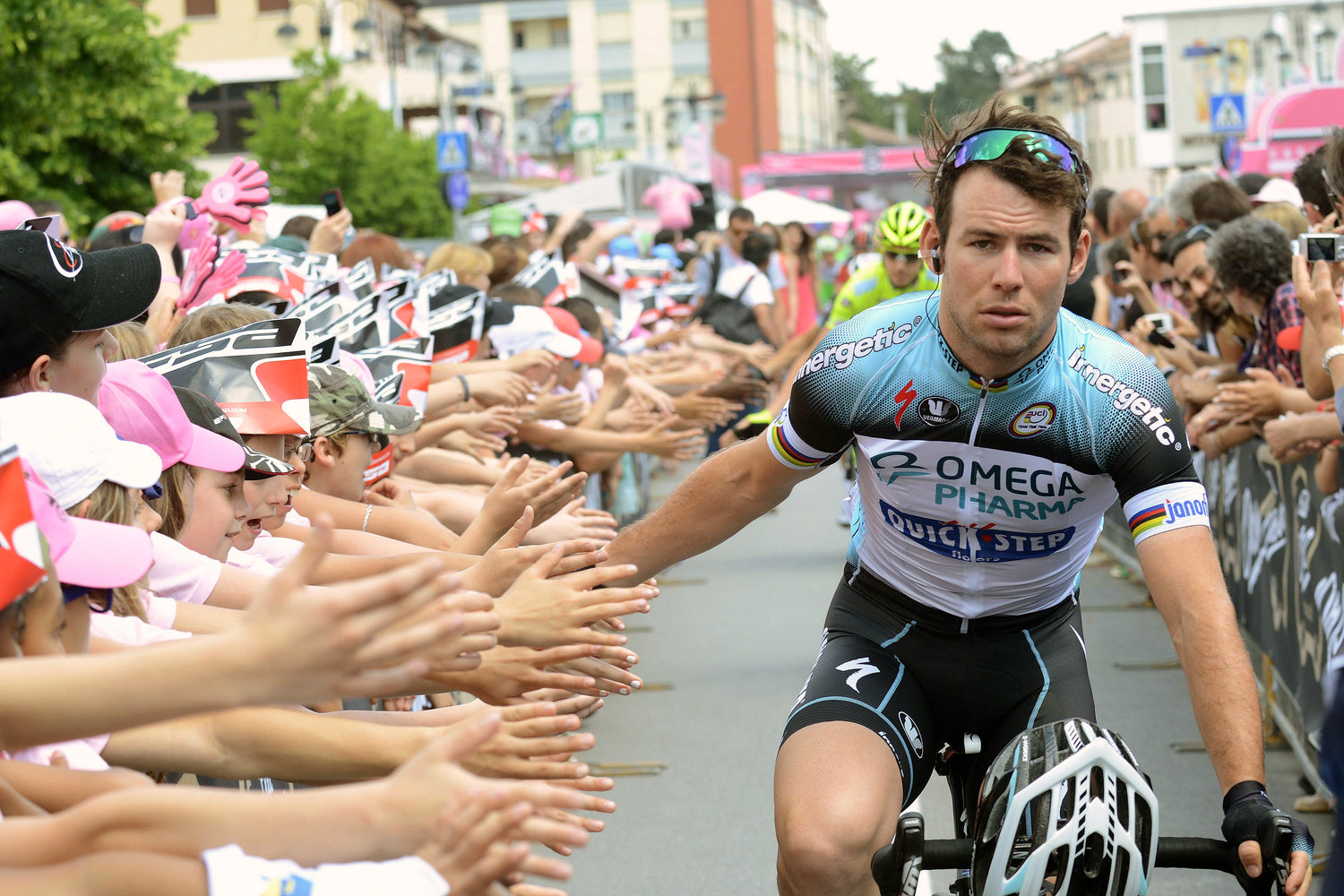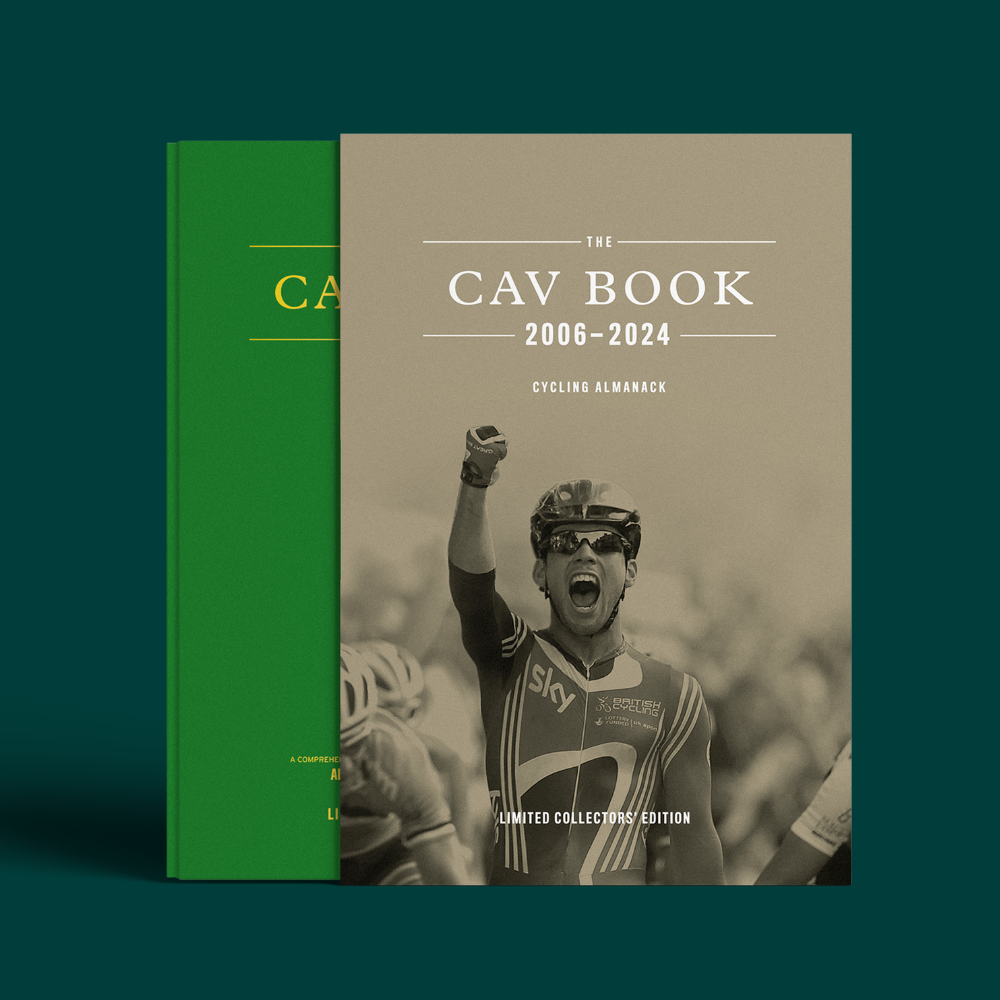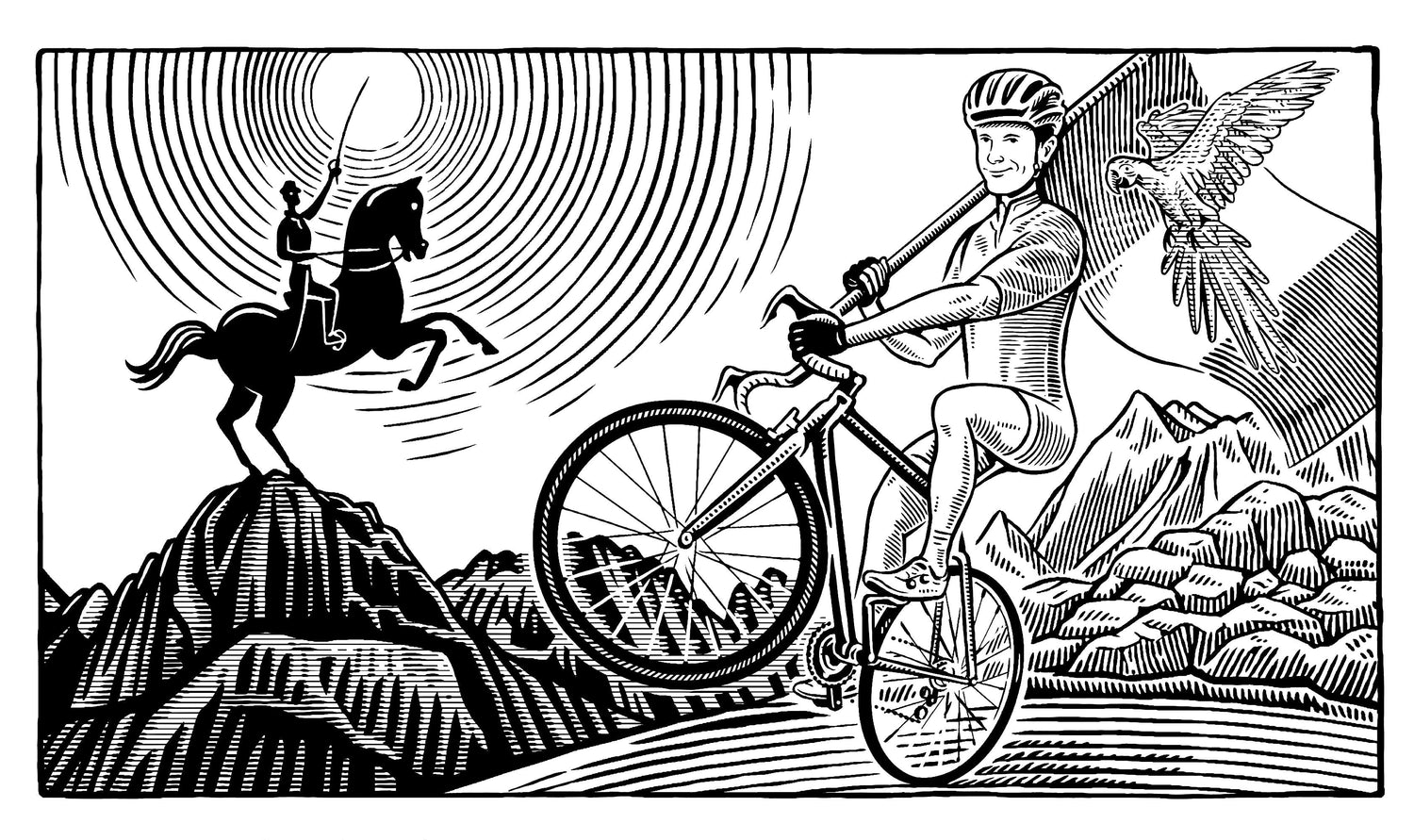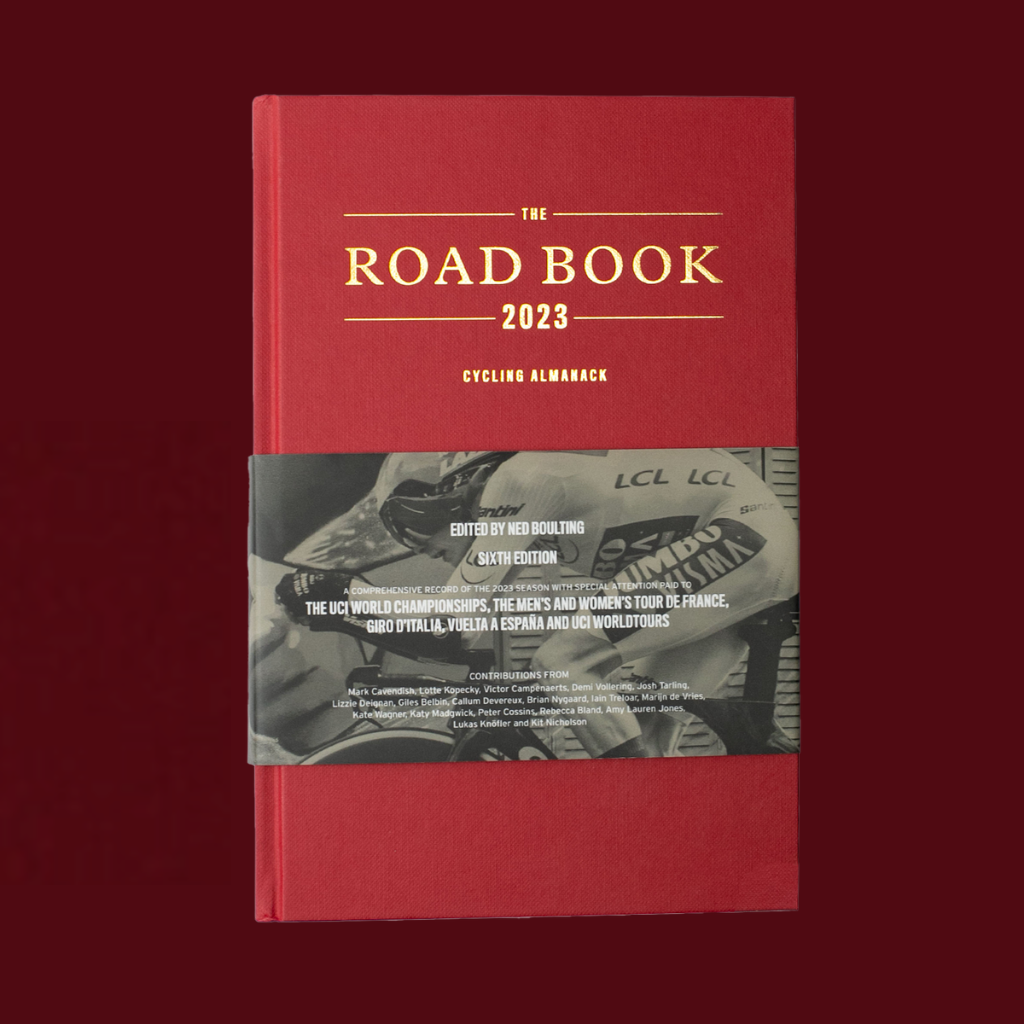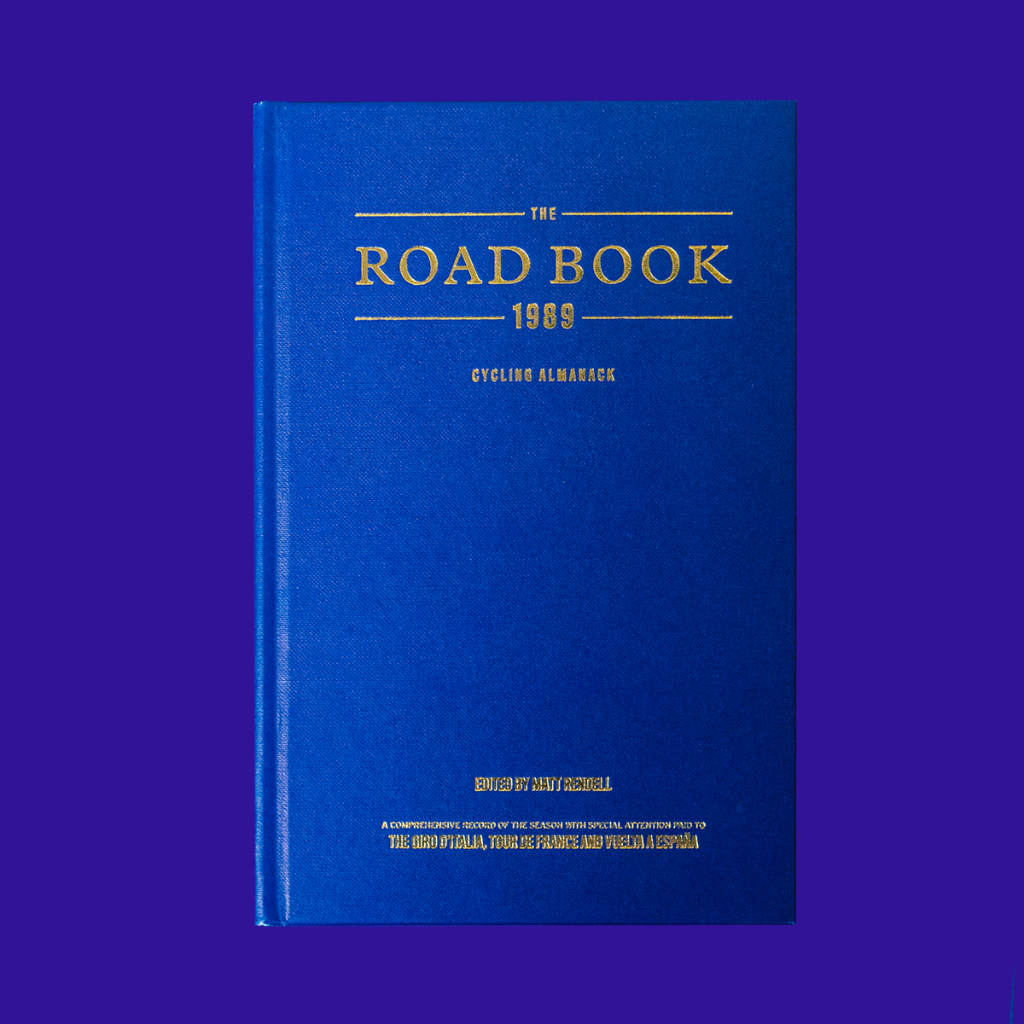‘It’s just a culmination of everything that a cyclist needs: they need to be skilful, they need to be strong, they need to have mental toughness and tactical awareness. That’s why I love it: because it’s more than just being the strongest bike rider. There are winners who puncture or crash, but you need it to go more right for you than anyone else, I suppose. It’s just never over until it’s over.’ – Lizzie Deignan, for The Road Book 2021

One week after Belgium’s toughest day, we come to France’s: Paris-Roubaix. The 121st edition of this race which began in 1896, marks the high point of the classics’ season, and the end of those raced over the terrain of Northern Europe. Starting from Compiègne, over 80km North of Paris, and finishing, 259.9km later, on the famous slopes of the Roubaix Velodrome, it is one of the most challenging one-day races on the calendar. Its iconic cobblestone trophy is seen as the crowning achievement of a career for any who can take it home, adding their name to a list of winners including Tom Boonen, Eddy Merckx, Fausto Coppi and in recent years, the likes of Peter Sagan and Mathieu van der Poel.
Devoid of any climbing whatsoever, it is the 29 cobbled sectors which make Paris-Roubaix a chaotic race. Their uneven surface causing punctures, mechanicals, crashes, and if the weather is poor, it can be a literal hellhole as the cobbles lose all traction increasing the likelihood of accidents. Small wonder the third ‘monument’ of the season is known as ‘The Hell of the North’.

This season, the peloton has been competing at an astounding pace, with numerous races marked as the fastest editions in their history, including the Tour of Flanders and Omloop Het Nieuwsblad. Given that Paris-Roubaix’s 2023 edition was the quickest in its history with Mathieu van der Poel averaging 46.841 kmph – 1kmph faster than Dylan van Baarle in 2022, though the Dutchman would be hard pressed to replicate his feat this season.
Furthermore, with crashes in recent weeks affecting many of the big names in the peloton (we wish all those injured at Itzulia the best of luck with their recovery) – we would be pleased if some teams opt for a slightly more cautious approach. The organisers have attempted to make the approach to the Arenberg Forest sector safer by inserting a chicane immediately before the entrance onto the viciously cobbled sector, to much debate. Intended to lower the approach speeds of the riders, it may simply serve to create congestion as riders fight for positioning as they enter the 5-star rated section. Even the best rider can be undone at this race, and it has captured the imaginations of viewers and riders alike due to its reputation as ‘a brute test of courage and strength’ - eloquently put by our editor, Ned Boulting, in our 2021 Edition.
https://theroadbook.co.uk/collections/all-products/products/the-road-book-2021-first-edition

All of this means that essentially, any rider could win on the day – they need skill, determination, strong teamwork and more than a little luck to succeed. Although Mathieu van Der Poel is the strong favourite, it only takes an unfortunate slip-up on a crucial section of pavé for his efforts to be in vain. In recent years many different tactics have proved successful. Van der Poel (Alpecin-Deceuninck) in 2023, and Dylan van Baarle (INEOS Grenadiers at the time – now with Team Visma-Lease a bike) in 2022 were both successful from solo attacks whilst other rivals struggled on the cobbles. Van der Poel in particular took advantage of his rival Wout van Aert (Jumbo-Visma) suffering a puncture which curtailed a strong assault. Indeed, a solo attack, or one from a small group of elite front-runners seems advisable, as the unpredictability of this uneven surface makes the front of the race the safest place to be. The winner of the 2019 edition, Philippe Gilbert, wrote an account for the Road Book in which he argued that being able to pick your own line on the cobbles is vital to staying upright, and therefore leading into these sections is a distinct advantage. If riders sit too far back, waiting for an opportunity, they risk being caught in a crash in the peloton, as they cannot see the contours of the road ahead of them and being amongst the bunch during such an incident is sure to dash any hopes of victory. Expect surprises, blood, daring attacks, and broken hearts – it is not a race for those without courage.
(Read Gilbert's account here: https://theroadbook.co.uk/collections/all-products/products/the-road-book-2019)
The Course
With 55.7km of the men’s course being cobbled, 3.2km more than last year and the most in the last 30 years, there are a number of sections where riders could come undone. The sectors are given a rating, from 1 star to 5 stars, based upon their difficulty with 5 stars being the most challenging. Two new sectors have been inserted, supposedly with the intention of making the experience more tiring, stretching the race out to, reduce the size of groups as they enter the more difficult sectors later on. Though whether this will increase safety or make for more interesting viewing remains to be seen.
There are a few historically decisive sectors where attacks have the opportunity to break free and where heroes are made. The first 5 star rated stretch is the famous Trouée d’Arenberg – a 2,284m long section of extremely rough cobbles often called the Arenberg Trench. Though its high-speed lead in off a descent has been altered with the aforementioned chicane, it still has the potential to shape the race. We will have to wait and see how this last-minute addition affects the race. The Arenberg Trench is notoriously difficult to force a breakaway on, though the chaos which normally erupts on this poorly maintained stretch of forest road can provide well-positioned riders with an opportunity as falling riders create space, stringing the race out. If a rider is well placed, towards the front of the group they may be able to stay there, as those behind them get caught in the melee. Positioning in the leadup to this stretch of cobbles is subsequently crucial, a rider sat in 50th place will be stuck there, unable to move into the gap and can do little else but watch their rivals ride off into the distance. Whilst coming a considerable distance from the finish, and its slippery cobbles mean the race might not be won here, it certainly can be lost.
The 18 following sectors trace along the classic route, including such challenging sectors as the 5-star Mons-en-Pévèle, and the 4-star Camphin-en-Pévèle which leads directly onto the Carrefour de l’Arbe. This last section is the final 5-star rated cobbled part of the course, and at 16.5km to go with only two, comparatively easy sections to follow, it’s the last truly tough segment where those riders with cyclo-cross and cobbled experience will attempt to make a final attack before the one and a half laps of the Velodrome round off this fantastic day of cycling. Even the very best of the men’s peloton need a curious blend of handling skill, punchy power, sprinting potential, astute team tactics and the knowledge of when to seize an advantage or when to hold back and more than a little luck to win – leaving us with a fascinating spectacle.

The 2024 edition of Paris-Roubaix Femmes comes a day earlier than the men’s, getting a prime-time television slot of 2pm on a Saturday afternoon. Only the 4th edition of this iconic race, it already has an impressive selection of winners: Lizzie Deignan and Elisa Longo Borghini winning the first two for Trek-Segafredo (now Lidl-Trek) both from solo-attacks whilst Alison Jackson (EF-Education – Easypost) was the unexpected, but nevertheless very welcome surprise victor in 2023 – outsprinting the rest of the breakaway after 29km of cobbles.
This will also be the longest edition yet of the women’s race totalling 148.5km, 29.2km of which is cobbled and will cover a few of the same sectors as the men’s. The Auchy-lez-Orchies à Bersée section is where Lotte Kopecky (Team Visma-Lease a Bike) attacked in 2022 to force early selection of riders, and the 4-star sector could again be used to similar effect. Especially as it is immediately followed by the 5-star Mons-en-Pévèle section. With 50km and 11 cobbled sectors to follow, an attack here would be early, but an early attack is by no means foolish, and this famously tricky section would be better than most for such a move. The second, and final 5-star section is the Carrefour de l’Arbe. Usually, the course encourages a solo winner, or a very small, battered, select group as a sprint finish on the velodrome’s slopes after 150km of cobbles is not desirable for any of the riders. In both races, we expect one of these incredibly tough cobbled sectors to be used to force a selection, from which the eventual winner will emerge as the most determined, and frankly, fortunate, rider on the day.
Though, as Road Book contributor Lizzie Deignan proved in 2021, one doesn’t have to even attack on the cobbles to use them to their full effect. Her astonishing ride in the inaugural edition of Paris-Roubaix Femmes, which started over 80km from the finish as an attempt to create space for Trek-Segafredo’s nominated leaders at the race (Ellen van Dijk and Elisa Longo Borghini) and turned into a monumental solo effort, was started before the first cobbled section. Instead, her ‘poise, power and great skill’ (Ned Boulting writing in The Road Book 2021) allowed her to develop a massive gap which even the peerless ability of Marianne Vos (Team Jumbo-Visma) couldn’t close.
(Read Lizzie's account here: https://theroadbook.co.uk/collections/all-products/products/the-road-book-2021-first-edition)
Men’s Riders to Watch
As with most of the classics this season, there is really only one out-and-out favourite, the current King of the Cobbles and World Champion: Mathieu van der Poel. Alpecin-Deceuninck’s man of the moment could become the first member of the current peloton to win this illustrious race for a second time and given just how strong he looked during his imperious 45km solo win at the Tour of Flanders, and with his indefatigable rival Wout van Aert (Team Visma-Lease a Bike) nursing a broken collarbone, a victory for the Dutchman seems almost inevitable. His cyclo-cross experience, and clear consummate capability on the cobbles will give him an edge in a race at which he has given a strong appearance at every time of asking.

Even if van der Poel is undone by the tricky course, Alpecin-Deceuninck have another ace up their sleeves in the rapid sprint of Jasper Philipsen. Launched to victory by his teammate at Milan-Sanremo, the Belgian has one monument under his belt this year and offers an interesting alternative as a team leader. With the race devoid of the climbing which caused his Tour of Flanders attempt to stutter, and with a good chance of leaving the other elite sprinters behind on the cobbles, Philipsen is another strong favourite.
The best bet for those competing with van der Poel, is a strong team performance, using cohesive and intelligent tactics to isolate the Dane, or force him into an ill-timed move, as no one rider has the power required to match him one-on-one. Lidl-Trek are another strong team this season, and with Mads Pedersen leading could be the ones to match Alpecin. Though his approach to the Ronde was probably flawed, leading too long and too aggressively, he is another man whose fast finish is certainly to be feared. What's more, he has an elite network of support, with the young Jonathan Milan in a rich vein of form having won two stages at Tirreno-Adriatico and performed an accomplished lead-out for Pedersen at Gent-Wevelgem, the 23-year-old is performing with a wisdom that belies his somewhat tender years.

Team Visma-Lease a bike have had a rough spring, their classics leader Wout van Aert, and now their super-star Jonas Vingegaard involved in horrendous crashes which we hope they swiftly recover from whilst Matteo Jorgenson has withdrawn on the eve of the race. The super-team looked a shadow of their former selves at the Tour of Flanders, simply incapable of matching the World Champion. That being said, Paris-Roubaix could be the race to turn their spring about-face, with former winner Dylan van Baarle and European Champion Christophe Laporte their roster isn’t lacking experience, talent or endeavour. Earlier in the season it was brutally efficient team tactics and intrepid riding from their lesser-known stars such as Jan Tratnik (also injured) which won them Omloop Het Nieuwsblad and they will need to replicate that efficiency and willingness to improvise in order to emerge victorious.
As a race in which anything can happen, there are a number of other teams who will hope that a very good day from one of their top riders, combined with an excellent one from the rest of their squad, can produce a surprise victor. Before an unfortunate mechanical failure on the Koppenberg, Movistar’s Ivan Garcia Cortina looked the strongest rider at the Ronde and the only one truly capable of challenging van der Poel’s dominance. With teammate Matej Mohorič sadly injured in Flanders, British Champion (and South London legend) Fred Wright will have an opportunity to ride as Bahrain Victorious’ sole leader. Though admitting to Rouleur Magazine that he was ‘pretty scared… I knew this was going to be fucking crazy’ on his first appearance at the race in 2021, a couple of years of experience should aid the Brit and he has the courage and bulldog attitude necessary to win if the cards (or the cobbles) land right.
Fellow young British star and Road Book contributor Josh Tarling (INEOS Grenadiers) may be young, but his multi-disciplinary skillset marks him as a rider capable of adapting to new terrain quickly. Although, the cobbles are not often kind to those making their debut, we hope Josh puts in a stellar performance so we can invite him back for another In the Winners’ Words. Kasper Asgreen of Soudal Quick-Step and Alberto Bettiol of EF-Education-EasyPost are both former winners of the Ronde von Vlaanderen and knowing a thing or two about cobbles means they will always be in with a shout.
Women’s Riders to Watch
Of the two races, Paris-Roubaix Femmes may be the more competitive day and make for more engaging viewing for those who tune in to watch teams and riders duke it out. Not only have most of the sport’s stars signed up for this most prestigious of races, but they are more evenly matched than the men’s and as such it will be a tough tilt indeed.

In a curious reflection of the pattern unveiling itself in the men’s peloton, last year’s all conquering Super-Team SD-Worx have struggled to repeat their success. Hopefully this is proof that cycling has not yet become as boring and predictable as football’s one-club premier league. The Dutch team have never had a rider lift the vaunted cobblestone trophy, and they may yet have to wait another year. The individual talent of their riders is irrefutable, and even without Demi Vollering, any one of Lotte Kopecky, Lorena Wiebes, or Chantal van den Broek-Blaak has the ability to win the race on their own. Kopecky has won the UAE Tour, Strade Bianche and Nokere Koerse this season, all as World Champion, and is normally fantastic on the cobbles. Whilst Wiebes has claimed 4 classics this season including Gent-Wevelgem and the Ronde van Drenthe performing well as an all-rounder, rather than exclusively as a sprinter.
Despite this, it requires diligent, cohesive team work to emerge victorious and with all the uncertainty of Vollering’s contract situation having been publicly aired, and with the disjointed performance put in by the team at The Tour of Flanders, SD-Worx do not look the domineering unit brimming with confidence that they once were. All this alongside the World Champion not looking quite as comfortable as we are used to on the cobbles, means that cobblestone trophy may have to wait another year.

In contrast, Lidl-Trek look every-inch the organised, dedicated team with riders willing to make sacrifices for the greater good, and with a wealth of talent to execute those plans and improvise when it becomes necessary. Although 2022’s winner, Elisa Longo Borghini is amongst those who have opted not to risk the cobbles (alongside Kasia Niewiadoma of Canyon//SRAM) and 2021’s winner Lizzie Deignan is suffering from a fractured arm, their roster is replete with talent. Lucinda Brand, Elisa Balsamo and Ellen van Dijk will all be rolling out, looking to make it 3 wins from 4 for the American team. Though the mountain of talent that is SD-Worx will be favourites for many, they will have quite the competitor in Lidl-Trek.
Team Visma-Lease a bike have a trump card which few can match in Marianne Vos. Although the greatest rider of all time has never won the race, she has already proved that this year is to be one of firsts. Vos is notoriously strong on the cobbles and her impressive sprint means that Paris-Roubaix is well-suited to her and alongside winning Omloop Het Nieuwsblad and Dwars door Vlaanderen, she has 248 other reasons why she could win. Though it was eventually in vain, Vos launched an impressive solo chase of Deignan in 2021, looking completely assured on the cobbles and on any other occasion would almost certainly have devastated the rest of the peloton to claim victory. With the course fairly flat, Vos’s power, tactical nous, and experience alongside the support of cyclo-cross World Champion Fem van Empel, it could be the year it all falls into place allowing her to add the toughest race on the world tour to her palmares.
Pfeiffer Georgi (DSM-Firmenich PostNl) is full of promise and will be looking to fulfil on that this year and with the not inconsiderable distinguishment of having started and finished all three Paris-Roubaix Femmes, and performed well on each occasion, she certainly should know a thing or two about cobbles. The Brit could well be one to watch this year, at only 23 she has the capacity to really nail her flag to the mast as the next superstar with a victory this time around.
Charlotte Kool (Team DSM-Firmenich PostNL) and Emma Norsgaard (Movistar) are both sprinters of the highest calibre, who without any significant climbs to contend with, would back themselves if they end up sprinting for victory in the velodrome. Whilst last year’s surprise winner Alison Jackson (EF Education-Cannondale), the first Canadian to win the monument, probably only has an outside chance, we certainly would love to see her shine again.
If you're looking forward to Paris-Roubaix as much as we are, then pick up one of our previous editions and read all about the last 6 years of the Hell in the North!
https://theroadbook.co.uk/collections/all-products
Written by Henrik Bassett
Photography courtesy of Russ Ellis.



